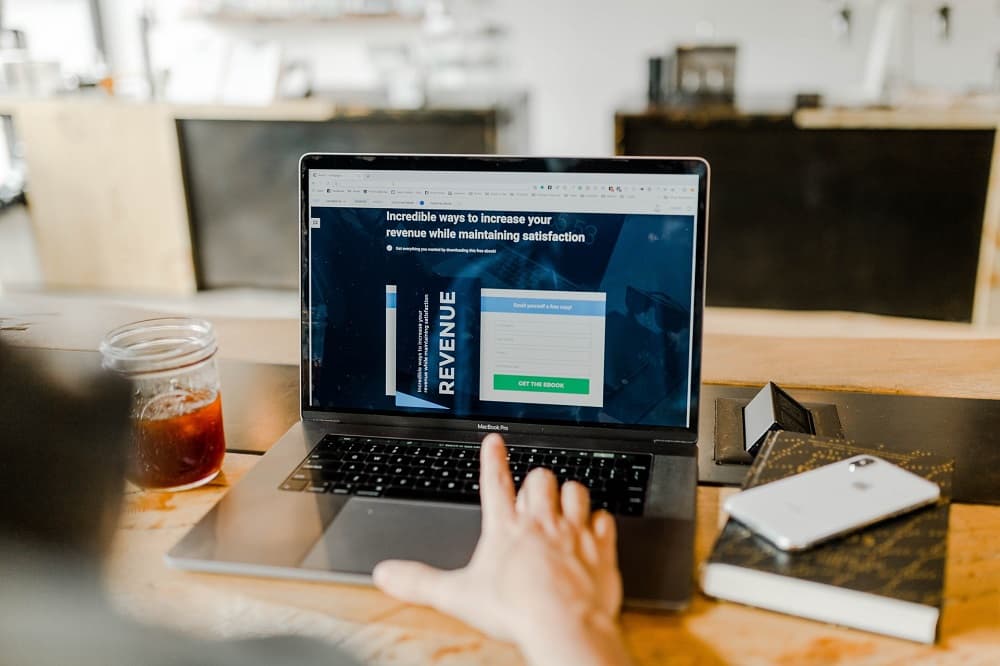Every online entrepreneur wants a website that can generate a lot of revenue and strong conversions. It ain’t an easy task, and you’ll have to work hard, but there is a way to achieve this objective.
This article will go through some of the most critical aspects to consider when creating a high-converting website, as well as how to get started.
To get the most out of a website, you’ll need to use strategic tactics to get your tourists to convert as well as make it look nice and run smoothly. Let us not, however, get ahead of ourselves. Let’s get started with the basics.
Table of Contents
Build a Solid Foundation
Any website requires a strong foundation. If your visitors aren’t interested in remaining on your website for more than a few seconds, using the new conversion tricks is pointless. Here are a few pointers to help you get started on the right foot.
Employ the Services of a Local Web Design Firm
A well-designed custom website is the best way to show potential clients that you run a serious company. There are a lot of web design companies out there that might help you, but we’ve found that going local is the best way to go. Hiring a local company makes the process go more smoothly, particularly if you own a physical store.
Maintain Your Website On a Regular Basis
If you want your website to run smoothly for an extended period of time, it must be maintained. Another advantage of hiring a local company to build your website is that you’ll be able to contact them more easily if you decide to make changes or something goes wrong.
Here are a few things you can do to keep your website up to date:
- Update all of your apps (if you choose to go with a template website instead of a custom design, this means updating all the themes, plugins, etc.)
- Investigate content delivery networks (CDN). These aid in the reduction of bounce rates by reducing the time it takes for your site to load.
- Add all of the requisite layers of site protection to keep hackers out.
Make Navigation Usability Effortless
If you want your customers to complete their buyer’s journey as quickly as possible, you must make it as simple as possible. The site’s most critical pages should be easy to find and accessible at all times.
This includes parts such as the products/services tab, the contact page, and every other aspect of the web that produces revenue or leads directly. Internet users in 2021 aren’t interested in treasure hunts; they want to be able to find what they’re looking for easily and without stumbling blocks.
Engage Your Audience and Keep Them with You
The aim of your website is to assist you in achieving your overall business objectives. If you’re not sure what they are (aside from making money), you should probably start there. When you’ve worked out this aspect, structure your website to support these objectives.
While your website should run smoothly and look fantastic, these factors alone will not result in conversions. You’ll need to practice conversion-focused design to achieve this.
This can seem to be a complicated concept, but the idea is simple: always remember what you want your visitors to do on your site and plan it accordingly.
Using effective calls to action is the best way to do this. These are typically buttons with compelling headlines and supporting text that encourage the visitors to take a specific action. This activity may range from simply visiting a webpage to subscribing to a newsletter to making a purchase.
Call-to-action buttons can be strewn around the web, but don’t do so randomly. Concentrate on key areas like: sidebar, top of each page, popup and footer.
Since your homepage is usually the most-visited, having a call to action on it is important. Simply position it above the fold with a brief description of your company’s mission.
Make Your Website Search Engine Friendly
Search engine optimization (SEO) used to be all about fooling Google and other search engines into ranking your site as high as possible in the search results by leveraging well-known flaws in the crawling algorithms.
Although the purpose of SEO hasn’t changed all that much (you still want your site to rank well), the methods for achieving it have. There’s no better SEO these days than keeping your guests entertained. This is ideal since satisfied customers are more likely to convert, so you’re effectively killing two birds with one stone.
Keeping the customers happy, on the other hand, isn’t the most straightforward goal you’ve ever seen. There are several variables to consider, as well as a significant amount of trial and error, but it is all worthwhile in the end. Second, let’s look at what you can concentrate on.
Mobile Responsiveness
For years now, mobile internet use has outpaced desktop use, and Google recently changed the way it indexes websites. Essentially, the algorithm that determines which pages appear first in search results now gives mobile-first sites a huge advantage, so making a responsive website is essential.
If you’re not sure if your site is mobile-friendly, Google’s tester will tell you in a matter of seconds, so give it a shot.
On-Site SEO
A few hours of online courses and some light reading on the best SEO practices will help you tweak your website and improve its SEO efficiency. There are also excellent resources available online that allow you to track your keywords or monitor your progress.
However, we suggest recruiting professionals if you want to refine your platform and get the most out of it in terms of SEO. While search engine optimization does not seem to explicitly lead to conversions, if done correctly, it may help you attract consumers who are more likely to convert.
Don’t Forget About Email Marketing
“What does email marketing have to do with improving the performance of my website?” you may be asking. We don’t blame you; at first glance, this section can seem unrelated to the subject of this article. But bear with us.
Aside from your website or online store, your mailing list is one of the most important marketing tools you have. See it this way: it’s a direct line of contact for people who have shown enough interest in your brand to provide you with their email addresses.
When you look at it in that light, it’s clear that email is one of the most effective sales channels you have at your disposal. Building an email list and sending out a periodic newsletter is always worthwhile, regardless of how successful your website, online store, or brick-and-mortar business is.
When you start using one to improve the success of the other, you’ve arrived at the stage where your email newsletter and your website converge. For example, one of the easiest and simplest ways to grow your mailing list is to include some value in exchange for your customers’ email addresses. Obviously, the type of service or product you provide would depend on the type of company you operate, but it could include items like:
- A brief video course on a topic of interest to the industry
- How-to guide
- PDF e-book
The goal is to make sure that the offer addresses a problem that many of your potential customers are experiencing. It should be actionable and beneficial while still leaving your prospects wanting more and allowing them to contact you quickly if they need assistance or clarification.
You may, on the other hand, use your newsletter to boost conversions on your website. Using the weekly newsletter, for example, to share your most recent blog posts or to promote a new product. By demonstrating your understanding of their issues, the newsletter helps you demonstrate your knowledge and develop consumer trust.
Conclusion
It’s time to get started developing your website and increasing conversions now that you’ve got everything you need. Despite the fact that knowledge is strength, your website will not improve on its own; you will have to put in some effort.
Start with the thing you think needs to be changed first if you’re overwhelmed by the scope of this project. Calls to action that are persuasive, communication modes, and mobile responsiveness are all good places to start.
Move on to the next item after you’ve dealt with the first, and the snowball effect will have you restoring your entire website in no time. Keep looking for ways to improve your conversions even though you think you’ve finished. The only way to stay ahead of the game is to do so.








